Heating from an electric boiler: options for organizing heating based on an electric boiler
If connecting a suburban area to a centralized gas supply is impossible for some reason and is at least not planned in the coming years, then heating from an electric boiler is often used to heat private houses - the solution has a number of advantages, although it is not without drawbacks.
To use the device effectively, it is important to correctly select the electrical equipment and circuit diagram. We offer to understand the design and functional features of different types of electric boilers, as well as evaluate the features of various options for connecting units to the heating system.
For those who plan to organize home heating from an electric device, it will be useful to learn how to use a double tariff to reduce electricity bills.
The content of the article:
Equipment classification and operating principle
An electric boiler converts electrical energy into heat and, depending on the design features, can be:
- TENOV;
- electrode;
- induction.
Regardless of the type, modern models are equipped thermostat, with which you can adjust the power of the device and the degree of heating of the coolant.
Usually it is also possible to receive information from an external sensor to control the temperature of the air mass in a specific room.
Device with heating element
Inside the container intended for water, install heating elements - heating elements. They can be made in the form of tubes or plates. To regulate the degree of heating, the heaters are turned on one by one.
Water enters the tank, is heated, and then transferred to the circuit. As it cools or heats up, individual heating elements turn on or off. The movement of the coolant is controlled by a built-in circulation pump.

Can choose dual-circuit models such boilers, they heat water not only for heating, but also for plumbing. Heating element devices are popular due to their simple design and relatively low price. When used correctly, they rarely break down.
In addition to water, antifreeze or oil compositions of various concentrations are used as a coolant. But the sizes of such devices are usually quite large, which limits the possibilities when choosing a place to install them. Over time, plaque settles on the heating elements, and the heating elements need to be replaced periodically.
Electrode boiler for heating
For heating, the potential difference at two electrodes and the natural resistance of water, which arises due to the salts dissolved in it, are used here. These are compact devices that can quickly heat small volumes of water.
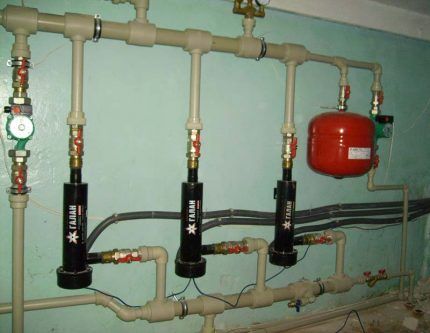
A built-in circulation pump is not needed here. This is a simple device that almost never breaks.And if this happens, it is not difficult to repair it. The price for devices of this type can be called affordable.
But oil and antifreeze are not suitable for such a boiler; only water, not distilled water, is acceptable as a coolant. Over time, the electrodes wear out and dissolve in water. They need to be periodically replaced with new elements.
Induction heating device
In such boilers, the heating element is made of a dielectric housing with a coil and core wound on it. The current in the coil causes a potential difference in the core, which heats up quite quickly. Thermal energy is transferred to the coolant.

This is a boiler with high efficiency and a long service life. Industrial models are quite expensive, but if desired, they can be made homemade induction analogue. Any coolant liquid is suitable, and breakdowns are extremely rare.
Options for connecting to the heating system
Electric boilers are used in systems with a liquid coolant that circulates through pipes.
These can be traditional radiator options:
- with natural coolant movement;
- with forced circulation;
- combined options.
In addition, boilers are successfully used in water underfloor heating systems. They are also suitable where they combine radiators as the main source of heating and TP as an addition to it. When installing heating based on an electric boiler, you should select a suitable scheme.
Natural type system
This system works by using the ability of water to expand when heated. The hot coolant tends upward, displacing cooled water from the circuit. It returns to the heat exchanger, heats up, replaces the cooled liquid, etc. In this case, the electric boiler is placed at the bottom of the circuit.
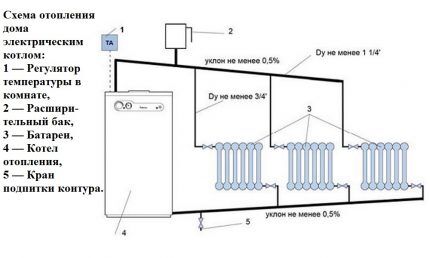
Implementation natural circulation systems water along the circuit requires competent calculation and correct installation.
You will need a significant number of pipes of a certain diameter, which must be laid with the required slope. Problems may arise if you need to adjust the power of the device and change the heating level of the coolant.
Forced circulation circuit
Here, the movement of hot water through the pipes is ensured by a pump connected to the system. In addition to it, you will also need a membrane expansion tank and equipment that ensures its operation: pressure gauge, shut-off valves, etc.
The electric boiler is placed below, then an expansion tank is connected to the system, after which install a circulation pump.

This type of circuit is less sensitive to the characteristics of pipes and radiators, which provides ample opportunities for choosing suitable components. It is in such systems that antifreeze can be used. The possibilities for regulating the water temperature in the circuit are also expanding.
Combined version of the system
Such a circuit is initially performed on the basis of the same principles as a system with natural movement of coolant flow. Therefore, the boiler is placed at the lowest point to ensure the free movement of warm water.
But the system is supplemented with an expansion tank and a circulation pump so that there is the possibility of forced movement of the coolant. This is done so that you can freely choose the operating mode of the heating system.
The combined option combines the advantages of both systems described above. To operate the circulation pump, with which the quality of heating is usually much higher, electricity is required.
If its supply is interrupted for some reason, the movement of the coolant in the forced system will stop, but not in the combined system.

The water will continue to move naturally along the contour. For heating in this case, you can use an alternative source of electricity or another type of fuel. There are options that allow you to switch the system from electric to solid fuel or gas boiler.
Water heated floor
This type of autonomous heating, the popularity of which is steadily growing. It is considered more economical to operate than radiator systems. A heating circuit made of a narrow plastic pipe is laid in a screed under the floor covering.
The coolant can only be heated to 26-28°C in order to provide the house with sufficient heat.The maximum permissible temperature is about 50°C, but such high heat is usually not needed. For water heated floor Boilers with heating elements, which allow you to widely vary the water temperature, are well suited.
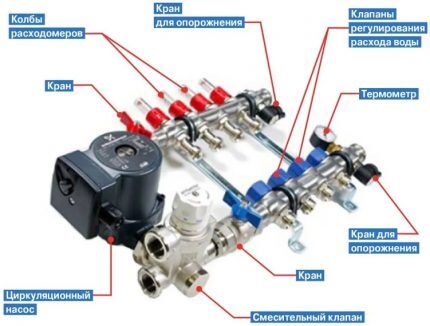
If you plan to use the same heater to provide hot water to the water supply system, you will have to take a model with a heating element. The harness must include indirect heating boilerso that the water in the DHW circuit is warmer than for heating by about 15°C.
In electrode devices, heating is usually 60°C or more. They can be used for TP, but additional installation of a mixing unit will be required to cool the coolant to an acceptable level.
In any case, a hydraulic comb containing such a unit will be needed for the correct installation of heating of this type. Heating control is performed using a temperature sensor that determines the current temperature of the coolant.
There are automatic control modules that allow you to additionally take into account the heating of the air in the room.
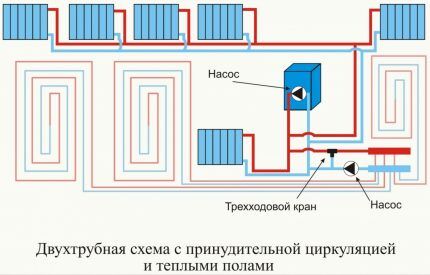
For a warm floor to function successfully, a number of important elements are needed. For example, the pipe for each individual circuit must be solid; no joints are allowed. It is necessary to carefully calculate the length of such a structure, taking into account the diagram laying the TP contour.
To do this, you can use special formulas to perform the calculations manually.It is convenient to use calculators available on specialized websites. After entering information about the area, layout and other characteristics of the transformer substation, the program will provide the necessary information.
Usually the estimated length of the pipe is slightly increased to have a small margin. If it seems too short, you'll just have to buy a new one. Heated floors require a filtration system to ensure that the coolant is sufficiently clean.
Electric boiler and double tariff
One of the significant reasons for using an electric boiler for heating is the possibility of using double tariffs for the use of electricity. Reducing fees during the night period allows you to significantly reduce costs.
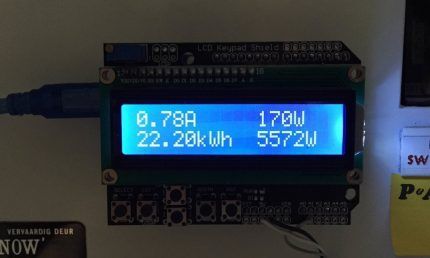
You will need to purchase and install a two-tariff meter. It is worth noting that double-circuit models of equipment with heating elements supply hot water to the collapsible tap with a characteristic noticeable delay. As a result, some of the heat is lost, which reduces the effect of saving electricity.
It makes sense to supplement such a design with an external heat accumulator that can maintain the high temperature of heated water for a long time. Such a device is quite effective when using a two-tariff meter.
Water is heated at night, stored warm and used during the day, energy consumption during the day is reduced, as well as electricity bills.
Conclusions and useful video on the topic
Electric boiler installation procedure:
Although using an electric boiler as a heating device is considered too expensive, its advantages are obvious.Such devices are safe for people and the environment, operate automatically, are accessible and easy to use.
If the type of heating system is chosen correctly and all its components are professionally installed, the boiler will operate for a long time without unnecessary costs.
Do you have experience using an electric boiler to heat your home? Or want to ask questions on the topic? Please comment on the post and participate in discussions. The feedback block is located below.




Boilers with heating elements have already proven themselves to be the best. Simple and reliable, efficiency is more than 95%. What else is there to be wise? Electrode and induction strongly depend on the composition and electrical conductivity of the liquid in the system, which is not clear how to control.
And we have a 9 kW electrode boiler. Works for 8 years without interruption. Before this, the Ten boiler consumed more energy, we paid 35% more than we pay now. Profitable. There were no problems.